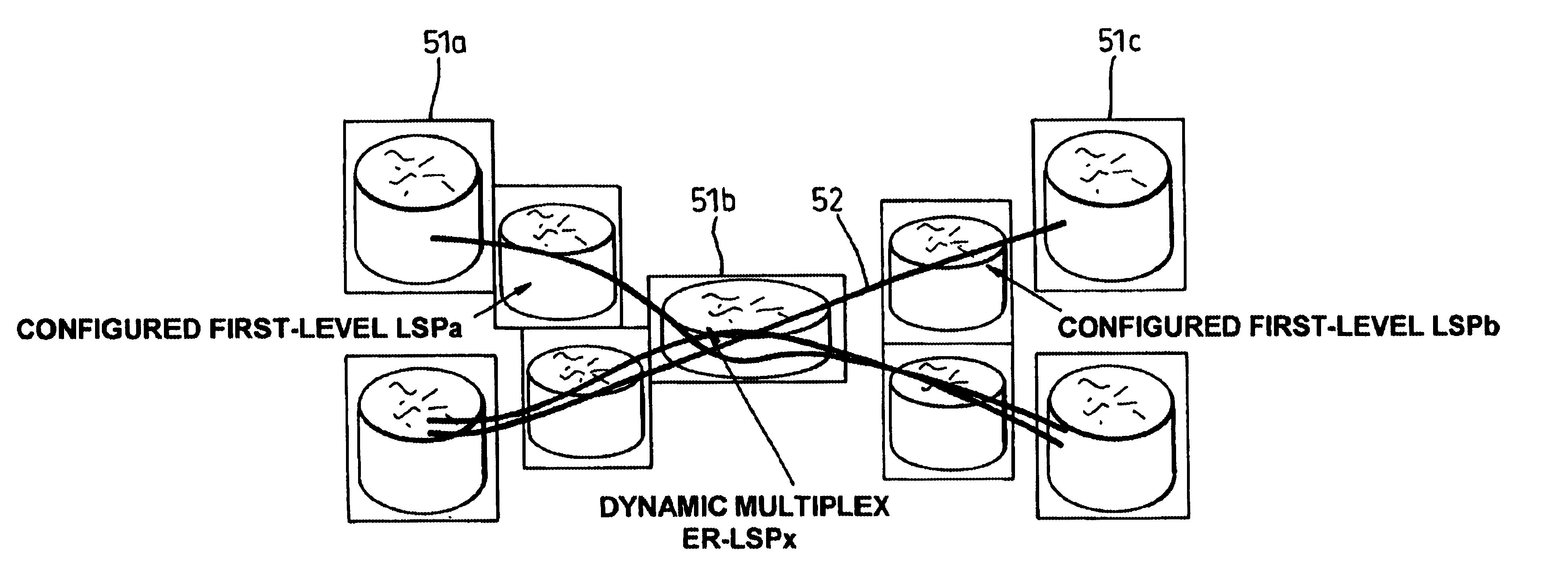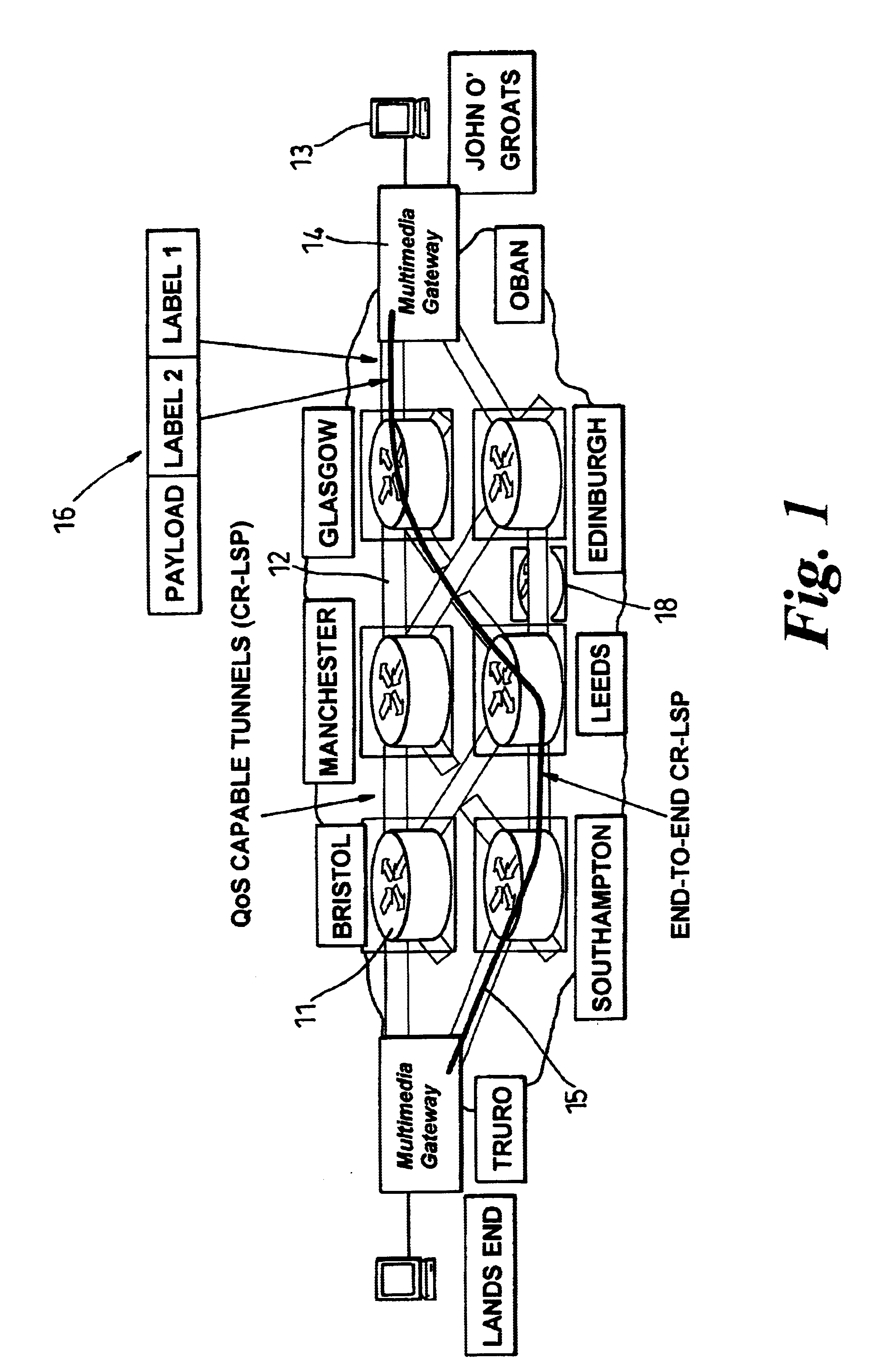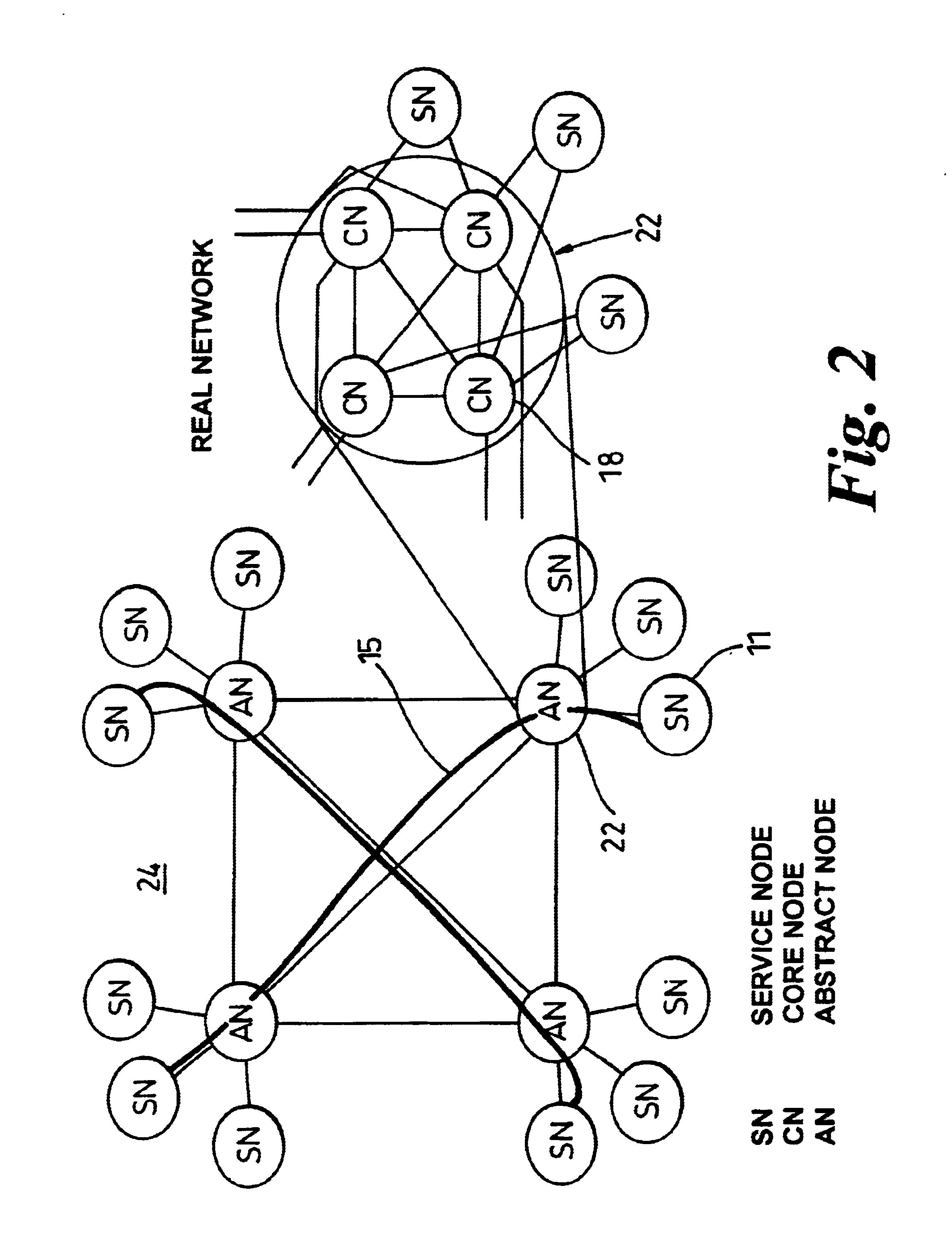Communications network
a communication network and network technology, applied in the field of communication networks, can solve the problems of significant operational task, low support of layer 3 routed applications, and inability to meet the needs of real-time management of the virtual publi
- Summary
- Abstract
- Description
- Claims
- Application Information
AI Technical Summary
Benefits of technology
Problems solved by technology
Method used
Image
Examples
Embodiment Construction
[0033]Referring first to FIG. 1, which is introduced for explanatory and comparative purposes, this figure illustrates in highly schematic form an exemplary virtual public / private network (VPN) deployed nationally or regionally in order to provide session switched multimedia services on a territorial basis. The network comprises a number of service nodes 11, located at the main centres of population, inter-linked via a network of core nodes by quality-of-service (QoS) capable tunnels 12. The construction of the core network will be described below. In FIG. 1, only one core node 18 is shown in the interests of clarity, but it will of course be appreciated that the network will incorporate a plurality of core nodes. Access to the network from user terminals 13 is provided via media gateways 14 each serving to one or more service nodes 11. Traffic is transported on constraint-based routed label switched paths (CR-LSP) 15 established between respective gateways. The network carries pack...
PUM
 Login to View More
Login to View More Abstract
Description
Claims
Application Information
 Login to View More
Login to View More - R&D
- Intellectual Property
- Life Sciences
- Materials
- Tech Scout
- Unparalleled Data Quality
- Higher Quality Content
- 60% Fewer Hallucinations
Browse by: Latest US Patents, China's latest patents, Technical Efficacy Thesaurus, Application Domain, Technology Topic, Popular Technical Reports.
© 2025 PatSnap. All rights reserved.Legal|Privacy policy|Modern Slavery Act Transparency Statement|Sitemap|About US| Contact US: help@patsnap.com



